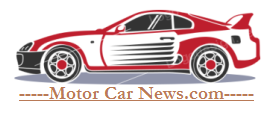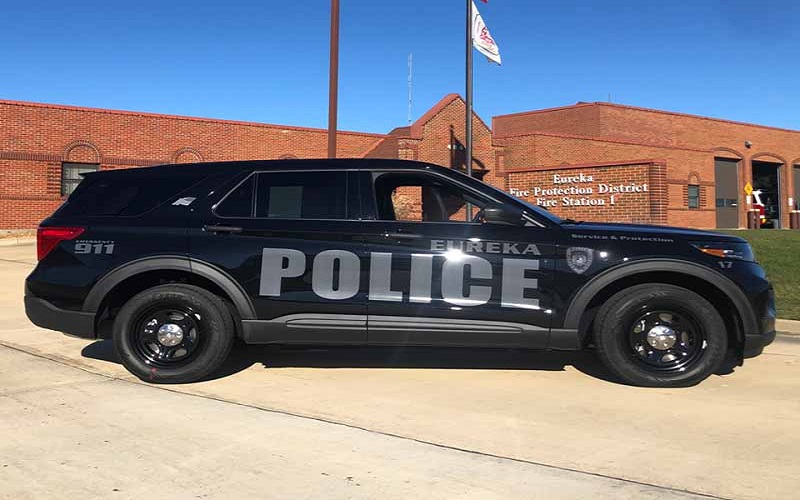Most citizens don’t spend much time considering law enforcement vehicle graphics. But what if we told you there’s a rich and exciting history worth hearing about and several vital considerations police departments consider when choosing graphics for their fleet? One of the most interesting elements of law enforcement vehicle graphics is ghost police car graphics.
Whether you work in law enforcement and you’re tasked with choosing new ghost graphics, or you’re simply eager to learn more about police vehicle graphics, you’ll find everything you need to know in this article.
Introduction to Ghost Police Car Graphics
In law enforcement, visibility can be a double-edged sword. While traditional patrol cars are marked with unmistakable, reflective designs that proudly announce their presence, an increasingly popular trend is taking a subtler approach.
Enter the realm of ghost car graphics—the less conspicuous counterpart to the bold, traditional police cruiser look.
But what exactly are ghost car graphics, and how did this trend come to be?
Before we cover the evolution of police car designs and understand why ghost graphics have gained popularity, a brief history will outline the transformation of law enforcement vehicles from rolling billboards to stealthy safety markers.
Evolution of Law Enforcement Vehicles
The transformation of police car designs over the years has been noteworthy. From the early black-and-white units to the sleek and modern law enforcement vehicles of today, police cars have undergone incredible changes reflective of technological advancements and strategic policing needs.
Traditional Police Car Markings
Formerly, police cars were designed with high-visibility markings, often including the use of flashing red or blue lights and bold insignia. These markings symbolized authority and served as a visual deterrent to crime within the community. Eye-catching and unmistakable, the traditional police car was impossible to miss!
Transition to Unmarked Vehicles
However, with the evolution of policing tactics, the need for subtler approaches became clear. Unmarked vehicles stepped onto the scene, sporting civilian appearances while retaining the capabilities of standard patrol cars. Unmarked vehicles proved beneficial in activities where blending in was critical, such as undercover operations and surveillance.
Introduction of Ghost Car Graphics
Building upon the success of unmarked vehicles, law enforcement agencies introduced ‘ghost’ graphics. These graphics utilize reflective decals that match the body color of the car. Under normal lighting conditions, the vehicle appears unmarked. However, when illuminated by light (such as a car’s headlights at night), the decals become visible, revealing the identity of the police vehicle.
These subtle yet effective markings have become popular among law enforcement agencies, allowing for a stealthy appearance and high visibility when necessary.
Let’s talk more about those benefits.
Advantages of Ghost Police Car Graphics
Ghost car graphics provide a practical middle ground. They allow law enforcement vehicles to operate subtly in daily traffic without forgoing the authoritative presence of a marked cruiser entirely.
1. Enhanced Stealth and Surveillance Capabilities
One of the standout benefits of ghost graphics is the element of surprise. Officers can more effectively monitor traffic and conduct surveillance without drawing immediate attention. It serves as a tactical advantage during traffic patrols or when attempting to catch drivers violating traffic laws.
2. Improved Traffic Enforcement
The stealth characteristic of ghost graphics strongly supports effective traffic enforcement. When drivers don’t instantly recognize the presence of a police car, their driving behavior is less likely to change merely in response to the vehicle’s presence, often resulting in more genuine observations of driving habits.
3. Heightened Community Engagement
Interestingly, ghost graphics also contribute to community engagement. Their unique and sleek design often sparks curiosity and discussions among community members. In turn, this opens an unexpected channel for law enforcement to engage with the public on the importance of road safety and awareness.
Challenges and Controversies
Despite their advantages, ghost car graphics are not without their challenges and controversies.
1. Public Perception and Trust
Some critique that stealthy graphics might erode trust between law enforcement and the community. The concern revolves around the perception of ‘trickery’ and fears it may reduce transparency.
2. Operational Considerations
Determining when to use ghost graphic-equipped vehicles versus traditionally marked cars can also be challenging. There are strategic and operational considerations that departments must assess to maintain the effectiveness of their fleet. However, a balanced approach to vehicle graphics can help alleviate some of these concerns.
3. Legal Implications
Lastly, legal issues regarding the distinguishability of law enforcement vehicles might pop up, especially when it comes to evidence collected during covert operations. Each jurisdiction may have its own set of regulations governing ghost graphics. This is just something to keep in mind when you’re choosing law enforcement vehicle graphics.
Trends and Innovations in Ghost Police Car Graphics
Advancements in technology are continually shaping the design and utility of ghost car graphics.
Technological Advancements in Ghost Car Graphics
The future holds exciting potential for ghost car graphics, from reflective materials that are even more inconspicuous to electronic decals that can be activated or deactivated with the push of a button.
Integration with Smart Policing Initiatives
As law enforcement agencies adopt smart policing initiatives, ghost graphics may integrate with other technologies to improve public safety and law enforcement efficiency.
Conclusion: Ghost Police Car Graphics
The use of ghost car graphics illustrates an often unexplored chapter in the history and future of law enforcement vehicle design. Benefits like improved traffic enforcement and agile surveillance are tempered by concerns over public perception and operational nuance. One thing is clear—the conversation surrounding ghost graphics is far from black and white.
Ultimately, as agencies continue to weigh the benefits against the challenges, the adoption of ghost car graphics is likely to increase, driven by innovation and the desire to maintain public safety in an increasingly complex world. We can expect to see these advancements change the landscape of police vehicle graphics while enduring the crucial conversations that shape the heart of law enforcement’s relationship with the community.
If your department needs new police car graphics, turn to Graphic Designs International. For nearly thirty years, they have provided top-quality design, production, and installation services for law enforcement agencies nationwide. From ghost police car graphics to fire rescue, sheriffs, and other emergency vehicles, they have the expertise to bring your vision to life while ensuring durability and compliance with industry standards.

